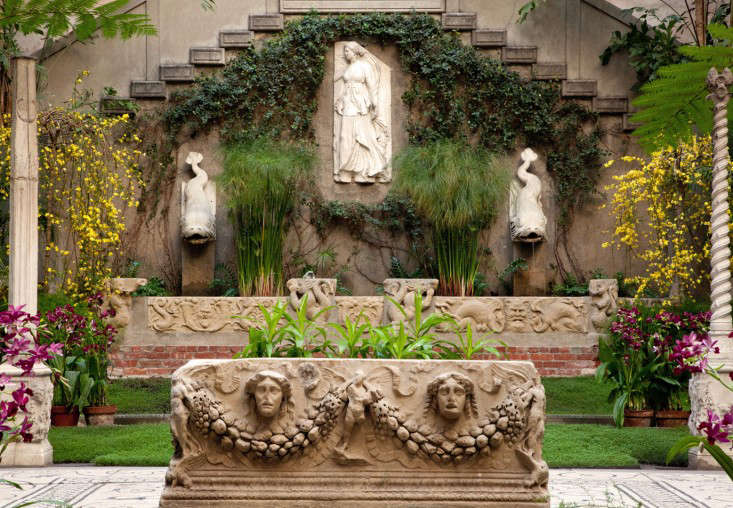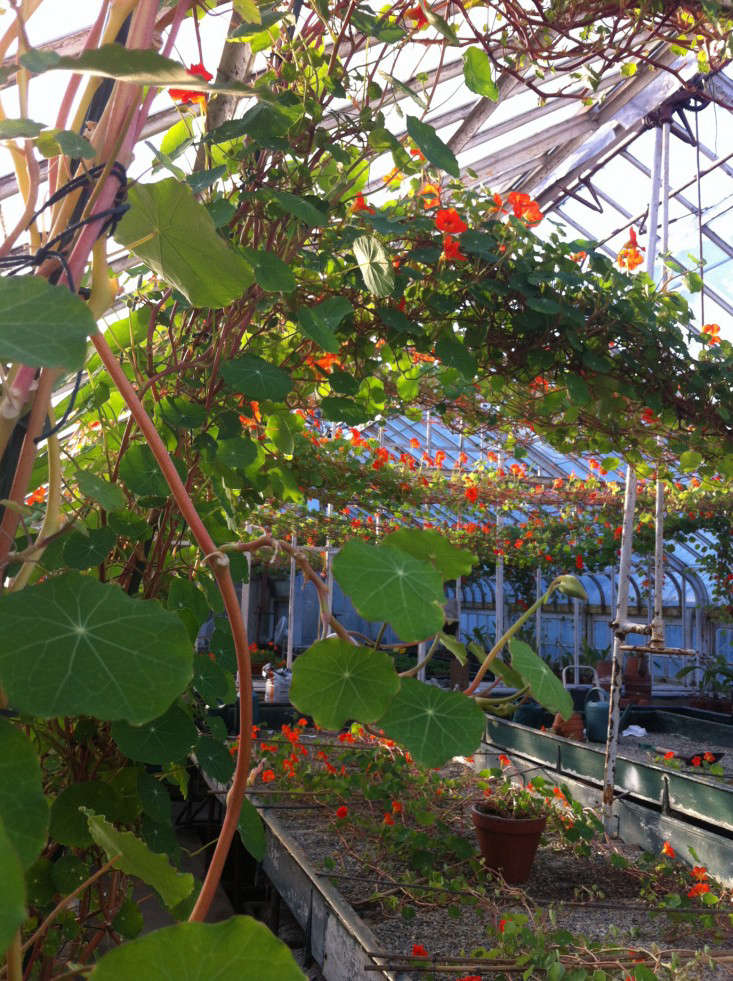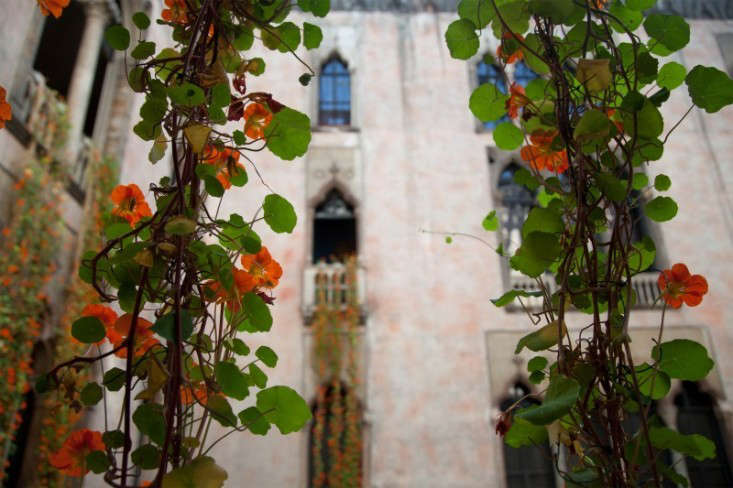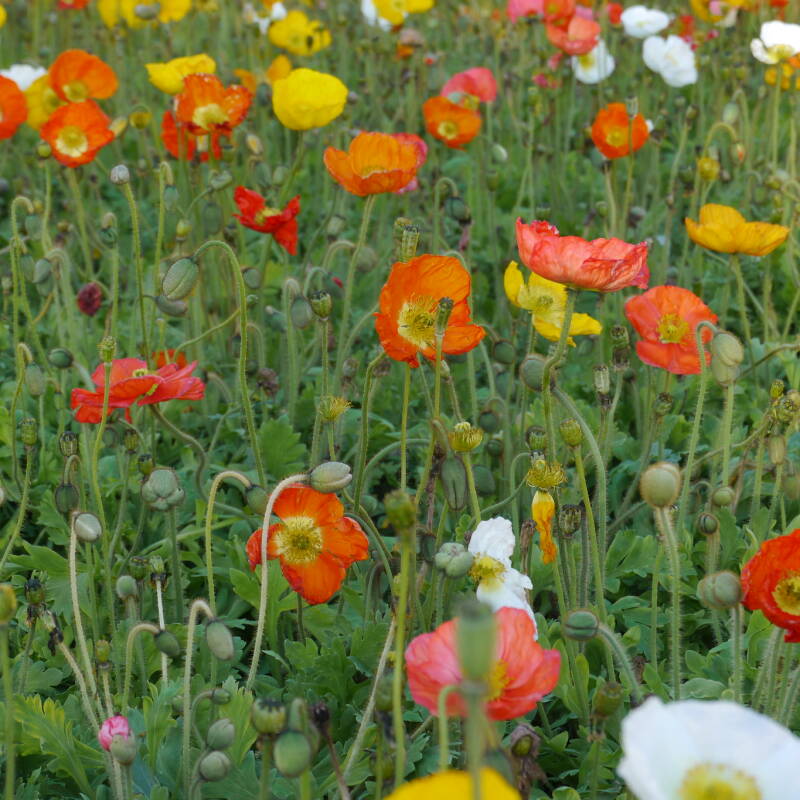It takes a certain brand of stick-to-it-iveness to make it through a New England winter. Just when you think it’s over, it covers April’s daffodils with a dusting of snow.
Luckily, there are places where weary New Englanders (and visitors alike) can find a respite from all the snow and ice. Justine has been helping assuage our Seasonal Affective Disorder with visits to the Lyman Estate Greenhouses in Waltham, MA (camellias have never looked so good), and today we have a special trip to the lauded gardens at the Isabella Stewart Gardner Museum in Boston. On winter’s nastiest days, it’s a comfort to know that somewhere nearby flowers are thriving.
Above: The first display of the year, Midwinter Tropics, is on display through February in the museum courtyard. Photograph by Siena Scarff.
Known to many as one of New England’s most important art collectors and philanthropists, Isabella Stewart Gardner is not as widely recognized for her horticultural contributions. But since construction of her Fenway Court museum was completed in 1903, an interior courtyard at the building’s heart has played host to an inspiring collection of lush plantings to complement Gardner’s fine art collections.
Today, a staff of five horticulturalists maintain the lush Victorian courtyard garden with plants grown onsite in a contemporary greenhouse and an offsite greenhouse nearby. Famous for hanging nasturtium displays in April and single-stem chrysanthemums displays in October, the courtyard plantings are the product of careful research and attention to detail.
Above: Archival images help staff horticulturalists plan courtyard plantings. Photograph by Siena Scarff.
Plantings are started and nurtured in light-filled greenhouses and then transported into a museum climate controlled for fine art preservation. Taylor Johnston, one of the staff horticulturalists, who works under the museum’s chief horticulturalist, Stan Kozack, explained the challenges of growing plants for life in the museum courtyard. The particulars require a special horticultural finesse: the staff needs to know at exactly what stage of development to bring the plants inside the museum, how much water they’ll need, and when they’ll need to be watered. Adding to the challenge, the staff practices sustainable horticulture techniques, and doesn’t rely on pesticides to maintain the health of the plants.
Above: Designed in reaction to the dark, mausoleum-like buildings housing most of the country’s art collections, the light and flower-filled courtyard has been a part of the Isabella Stewart Gardner Museum’s design from its inception. Photograph by Siena Scarff.
Above: Single-stem chrysanthemums were nurtured first in the museum’s offsite greenhouse and later transported to the museum for display. Photograph by Taylor Johnston.
Above: Plantings in transit. Photograph by Taylor Johnston.
Above: Gigantic single-stem chrysanthemums in the museum courtyard. Photograph by Siena Scarff.
Above: Trimming nasturtium vines in the museum greenhouse. Photograph by Taylor Johnston.
Above: Terra cotta pots filled with nasturtium vines destined for the museum courtyard. Photograph by Taylor Johnston.
Above: Staff horticulturalists train the nasturtium vines to grow from 25 to 30 feet long. Photograph by Taylor Johnston.
Above: To see the trailing nasturtium displays for yourself, plan your visit to the museum for the month of April. Photograph by Siena Scarff.
The Isabella Stewart Gardner Museum is open from Wednesday to Monday from 11 am to 5 pm; Thursdays until 9 pm; closed Tuesday. Admission is $15 for adults, $12 for seniors, and $5 for students with a valid ID.
The ongoing “Ask the Gardener” program allows visitors the chance to chat with a staff horticulturalist; first and third Fridays of the month from 11:30 am to 12:30 pm beside the historic courtyard, free with admission. Also not to be missed: the museum’s Monk’s Garden, a contemporary garden designed by Michael Van Valkenburg as a way to link the historic museum and the contemporary greenhouse and wing designed by Renzo Piano in 2012.



















Have a Question or Comment About This Post?
Join the conversation